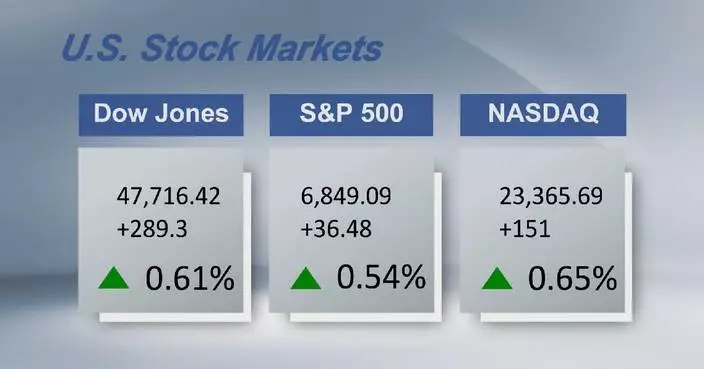Feature · News
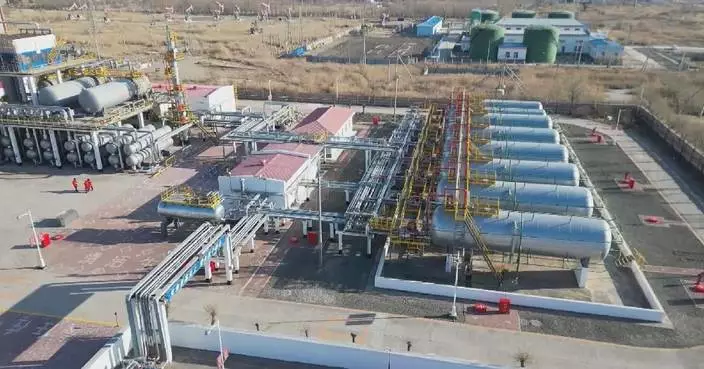
Shale oil output in northeast China hits 1mln tons with tech breakthroughs, green transition

China holds core leading position in global offshore wind power production: report

Federal judge appears skeptical of Trump's ongoing command of California National Guard troops

China expands regional connectivity with new rail link to Vietnam border city

China urges Japan to speed up destruction of abandoned chemical weapons

Netflix to acquire Warner Bros. studio and streaming business for $72 billion

Chinese GPU developer sees stock price surge on market debut

Palestinian president thanks Xi for humanitarian aid

Xi to attend closing ceremony of 7th Meeting of China-France Business Council with French president

Venezuelan president warns of “armed struggle” if attacked

An international body tasked with governing Gaza will be announced by the end of year, officials say

The Latest: 2026 FIFA World Cup groups are set. See what the tournament could bring

Photos of the FIFA World Cup draw for the 2026 soccer tournament

ICE says agents have arrested 12 people in Minneapolis as part of immigration operation

What might change for streamers under the proposed $72B Netflix-Warner Brothers Discovery deal

Colorado hires Brennan Marion as offensive coordinator, architect of the high-tempo "Go-Go" system
Chinese GPU developer sees stock price surge on market debut
Palestinian president thanks Xi for humanitarian aid
Xi to attend closing ceremony of 7th Meeting of China-France Business Council with French president
Venezuelan president warns of “armed struggle” if attacked
Shale oil output in northeast China hits 1mln tons with tech breakthroughs, green transition
China holds core leading position in global offshore wind power production: report

Federal judge appears skeptical of Trump's ongoing command of California National Guard troops
China expands regional connectivity with new rail link to Vietnam border city
China urges Japan to speed up destruction of abandoned chemical weapons

Netflix to acquire Warner Bros. studio and streaming business for $72 billion

An international body tasked with governing Gaza will be announced by the end of year, officials say

The Latest: 2026 FIFA World Cup groups are set. See what the tournament could bring

Photos of the FIFA World Cup draw for the 2026 soccer tournament

ICE says agents have arrested 12 people in Minneapolis as part of immigration operation

What might change for streamers under the proposed $72B Netflix-Warner Brothers Discovery deal

Colorado hires Brennan Marion as offensive coordinator, architect of the high-tempo "Go-Go" system
Feature·Bloggers

【What Say You?】UK Agitators Hijack Grief: The "Triplet" Protest Strategy

【Bastille Commentary】Tightening the Net on Subversive “Parliaments” Is Exactly the Point

【Bastille Commentary】The UK Is Truly Sneaky Towards Hong Kong Migrants

【Mao Paishou】Poll Shock: China’s Fan Base Surges—But There’s No Mystery Here

【What Say You?】From “Fake Pastor” to Deceitful Asylum Seeker – Alan Keung Sold Out His Friends for Selfish Gain

【What Say You?】The West's 'Democratic' Dream Is Dying—And Its Own People Are Pulling the Plug

What boycotting looks like 70 years after the Montgomery Bus Boycott
- Released 911 calls reveal desperate pleas and tragic outcomes during Texas Hill Country flood
- Florida kicks off first black bear hunt in a decade, despite pushback
- Ukrainian women embrace combat roles as technology reshapes the battlefield
- Louisiana inmates on the run after escaping by breaking through degrading jail wall
- New Orleans leaders blast immigration crackdown, pointing to video of agents chasing US citizen
- 911 calls reveal terror of July 4 floods as those trapped in attics and camp cabins beg for help
- The Latest: Grand jury transcripts from abandoned Epstein investigation in Florida ordered released
- Arizona congresswoman claims she was pepper sprayed during federal operation
- What to know as lawmakers disclose vivid new details of US boat strikes

US long-term sanctions shackle Venezuela's development: expert
- Int'l gold price closes flat amid uncertain US Fed rate cut prospects
- Chinese vice premier holds video call with U.S. treasury secretary, trade representative
- Chinese envoy urges int'l community to confront root causes of Palestinian question
- French first lady meets her "old friend" in China
- China, Russia agree to resolutely safeguard outcomes of World War II victory: spokesman
- First direct air route between China, Argentina hailed by passengers, tourism sector
- China analyst recaps Asian stock markets' Friday performance
- China-South Africa human rights seminar held in Pretoria
- Chinese GPU maker's market debut lifts China's A-shares: analyst

2025 Guangzhou Design Week Opens: PHOMI Holdings Leads Tech Innovation in Architectural Aesthetics
- K. Wah Group Donates Additional HK$12.07 Million for Tai Po Recovery
- XIXILI Reimagines Plus-Size Lingerie in Malaysia
- Abu Dhabi signs agreements and explores opportunities to strengthen partnerships with India and Singapore
- Essential Document Checklist for SIM Applications
- Cyclum NextGen Travel Centers Continues with Phillips 66 for Historic Snowball Derby
- Shops empty in a Hispanic neighborhood as immigration crackdown comes to Louisiana
- Scottsdale Promenade Welcomes The Elf on the Shelf®
- Florida congressional Republicans tell Trump to keep oil drilling off state's coasts
- Wall Street rises to the edge of its all-time high

Feinstein Institutes’ Research Pinpoints Core Cause of Vascular Cognitive Impairment, Unlocking New Therapeutic Avenues for Cognitive Decline
- France intercepts illegal drone overflight at nuclear submarine base
- Cloudflare says service restored after outage that brought down sites including Zoom and LinkedIn
- Photos show the last supermoon of the year shining in December skies
- Faulty glucose monitors linked to 7 deaths and more than 700 injuries, FDA warns
- US health department unveils strategy to expand its adoption of AI technology
- Russia restricts FaceTime, its latest step in controlling online communications
- One Tech Tip: Up your Christmas shopping game with AI tools
- Don't forget pets when preparing for winter's cold. Here's what experts recommend
- WhatsApp faces European antitrust investigation over artificial intelligence

Groundbreaking architect Frank Gehry's famous buildings, in photos
- Rapper Tekashi 6ix9ine gets 3 months in prison for violating probation in gang case
- Architect Frank Gehry’s iconic works in photos
- Frank Gehry, the most celebrated architect of his time, dies at 96
- What Netflix's acquisition of Warner Bros. means for the movies
- What to know about the Eurovision Song Contest as Israel's participation sparks walkouts
- Darlene Love reflects on her enduring holiday classic, 'Christmas (Baby Please Come Home)'
- Cary-Hiroyuki Tagawa, actor who performed in 'Mortal Kombat,' has died at 75
- Iran's famed singer Googoosh recalls family, exile and life in the spotlight
- Trinidad and Tobago's steelpan makes a comeback as a new generation embraces its sound

Ducks snap Capitals' 6-game winning streak with 4-3 shootout victory on goals by Terry, McTavish
- Banana peel moment! A slippery slope for McIlroy during his 3rd round at the Australian Open
- Gilgeous-Alexander's 33 points in 3 quarters power Thunder to 14th straight win
- Stenlund has goal and assist as Mammoth beat Canucks 4-1
- Bucks coach Doc Rivers says he anticipates Giannis Antetokounmpo missing about 4 weeks
- Kevin Durant joins elite NBA club with 31,000 points milestone
- Cedric Coward has 23 points and 14 rebounds to lead Grizzlies past Clippers, 107-98
- Knicks jump out to a 23-0 lead over the Jazz, largest in the NBA since detailed play-by-play began
- Rantanen has goal and 2 assists as Stars beat Sharks 4-1 to extend point streak to nine games
- Siakam scores season-high 36 points as Pacers beat struggling Bulls 120-105

Transport Department Boosts Services for Residents Displaced by Wang Fuk Court Fire in Tai Po
- Government Officials Discuss Support Fund and Long-Term Plans for Wang Fuk Court Fire Victims
- Vote for Professional Expertise to Build a Better future
- Bastille's Follow-up Report on the Tai Po Fire up to Now
- Poll Cards Mailed as Hong Kong Prepares for December 7 Legislative Council Election
- Government Task Forces Mobilize Support and Relief Efforts Following Wang Fuk Court Fire in Tai Po
- HKSAR Government Condemns US Politicians for Misleading Comments on National Security Case
- Tai Po fire victims' conditions improve; no patients remain critical, healthcare staff continue dedicated care
- Hong Kong Reports No New Chikungunya Fever Cases as Surveillance Continues Amid Global Outbreaks
- GBA Lawyers Organization Launched to Enhance Legal Collaboration in Guangdong-Hong Kong-Macao Greater Bay Area
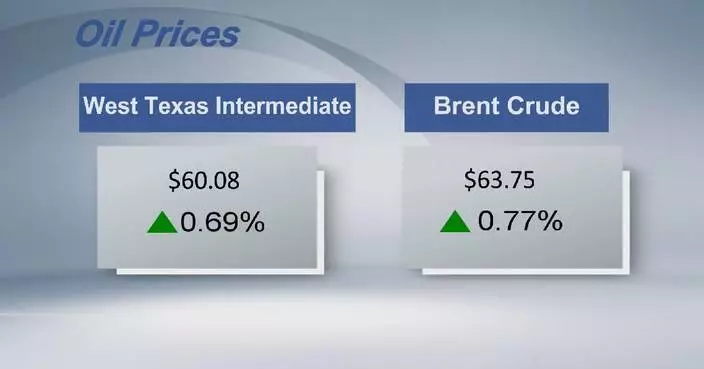
Crude futures settle higher
- U.S. stocks edge higher after fresh inflation data
- U.S. dollar stays flat
- Death toll from Sri Lanka's extreme weather rises to 607
- Cauldron lighting ceremony of 2026 Milan-Cortina Olympic Winter Games held in Rome
- Arab, Muslim countries oppose Israel's one-way Rafah reopening plan
- Russia strikes Ukrainian military, energy infrastructure, Ukraine hits Russian port
- Death toll nears 900 in Indonesia while aid flows to stranded survivors
- UN warns against atrocities in Sudan's Kordofan as violence escalates
- East China nature reserve moves Yangtze alligators indoors for winter
Category · News

Ducks snap Capitals' 6-game winning streak with 4-3 shootout victory on goals by Terry, McTavish

Banana peel moment! A slippery slope for McIlroy during his 3rd round at the Australian Open

What boycotting looks like 70 years after the Montgomery Bus Boycott
US long-term sanctions shackle Venezuela's development: expert

Gilgeous-Alexander's 33 points in 3 quarters power Thunder to 14th straight win

Stenlund has goal and assist as Mammoth beat Canucks 4-1
Int'l gold price closes flat amid uncertain US Fed rate cut prospects

Released 911 calls reveal desperate pleas and tragic outcomes during Texas Hill Country flood

Florida kicks off first black bear hunt in a decade, despite pushback

Transport Department Boosts Services for Residents Displaced by Wang Fuk Court Fire in Tai Po

Ukrainian women embrace combat roles as technology reshapes the battlefield

Bucks coach Doc Rivers says he anticipates Giannis Antetokounmpo missing about 4 weeks

Kevin Durant joins elite NBA club with 31,000 points milestone

Cedric Coward has 23 points and 14 rebounds to lead Grizzlies past Clippers, 107-98

Louisiana inmates on the run after escaping by breaking through degrading jail wall

Knicks jump out to a 23-0 lead over the Jazz, largest in the NBA since detailed play-by-play began

Government Officials Discuss Support Fund and Long-Term Plans for Wang Fuk Court Fire Victims

Rantanen has goal and 2 assists as Stars beat Sharks 4-1 to extend point streak to nine games

Siakam scores season-high 36 points as Pacers beat struggling Bulls 120-105

New Orleans leaders blast immigration crackdown, pointing to video of agents chasing US citizen
Crude futures settle higher

Durant reaches 31,000 career points as Rockets dominate Suns

Cade Cunningham has 29 points and 9 assists in Pistons' 122-116 win over Trail Blazers

Big night from bench players helps 76ers beat Bucks 116-101
U.S. stocks edge higher after fresh inflation data
U.S. dollar stays flat

Kon Knueppel hits 5 3-pointers, scores 21 points to lead Hornets past Raptors, 111-86

Jokic scores 39 points as Nuggets use big fourth quarter to rally for 134-133 win over Hawks

Knicks jump out to a 23-0 lead and rout the Jazz 146-112

Donovan Mitchell scores 28 points, Cavaliers beat Spurs 130-117

Eric Comrie makes 34 saves in Jets' 4-1 victory over the Sabres

Franz Wagner scores 32 points, Magic hold off Heat 106-105

Theodore has goal and assist, Schmid gets shutout as Golden Knights beat Devils 3-0

Brown scores 30 points, Celtics cruise to 126-105 win over Lakers team missing James, Doncic

911 calls reveal terror of July 4 floods as those trapped in attics and camp cabins beg for help
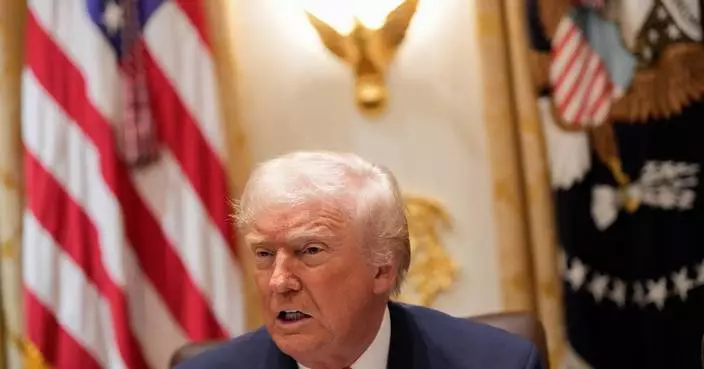
The Latest: Grand jury transcripts from abandoned Epstein investigation in Florida ordered released

2025 Guangzhou Design Week Opens: PHOMI Holdings Leads Tech Innovation in Architectural Aesthetics

Solo Ball helps No. 5 UConn pull away in 2nd half in 83-59 win over East Texas A&M

K. Wah Group Donates Additional HK$12.07 Million for Tai Po Recovery
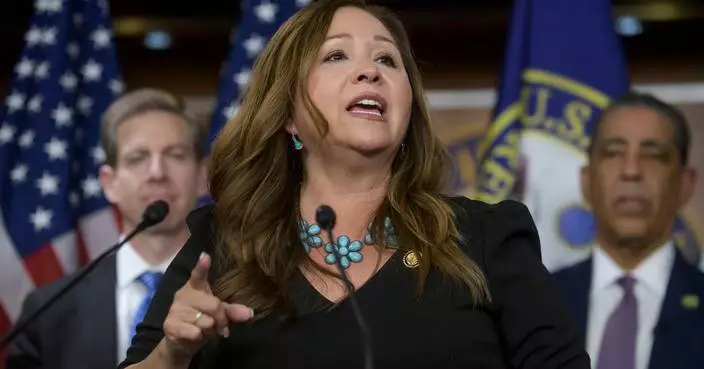
Arizona congresswoman claims she was pepper sprayed during federal operation
Chinese vice premier holds video call with U.S. treasury secretary, trade representative
Death toll from Sri Lanka's extreme weather rises to 607
Cauldron lighting ceremony of 2026 Milan-Cortina Olympic Winter Games held in Rome

Groundbreaking architect Frank Gehry's famous buildings, in photos

What to know as lawmakers disclose vivid new details of US boat strikes

XIXILI Reimagines Plus-Size Lingerie in Malaysia

Rapper Tekashi 6ix9ine gets 3 months in prison for violating probation in gang case

Ex-SEC commissioner Roy Kramer, whose vision paved the way for college football playoffs, dies at 96
Arab, Muslim countries oppose Israel's one-way Rafah reopening plan

'Oh, my God' — 88-year-old Michigan grocery cashier overwhelmed by sudden $1.7M gift
Chinese envoy urges int'l community to confront root causes of Palestinian question

Argentina and Messi will open their World Cup defense against Algeria. The US starts vs. Paraguay
Russia strikes Ukrainian military, energy infrastructure, Ukraine hits Russian port

Abu Dhabi signs agreements and explores opportunities to strengthen partnerships with India and Singapore

Essential Document Checklist for SIM Applications

911 calls from Texas floods reveal chaotic and desperate pleas for rescues

High school student, 18, charged with arson in fire that burned New York City subway passenger

Another must-watch moment for Michael Jordan as NBA great testifies at NASCAR trial

Raiders' Maxx Crosby questionable with knee injury but expected to play against Broncos

Suspect in DC pipe bomb case was 'disappointed' after Trump lost 2020 election, prosecutor says

West Virginia National Guard member who survived DC shooting is slowly healing, governor says

Broncos face Raiders, looking to extend win streak to 10 games

As Hope falls, New Zealand's hopes rise of a 1st-test win over the West Indies

Notable early reaction to Netflix's deal to acquire Warner Bros

Architect Frank Gehry’s iconic works in photos

Massachusetts court hears arguments in lawsuit alleging Meta designed apps to be addictive to kids

US, Ukraine officials say they'll meet for 3rd day after progress on creating a security framework

Brazil's Ancelotti raises doubts about whether Neymar will reach the 2026 World Cup

Mexico optimistic about World Cup chances after group-stage draw

Lakers without both LeBron James and Luka Doncic for matchup with Celtics

Former DEA agent charged with agreeing to launder millions of dollars for Mexican drug cartel

GM Josh Byrnes wants the Rockies to join in on the winning fun like the other teams around town

US vaccine advisers say not all babies need a hepatitis B shot at birth

Jets' Justin Fields out vs. Dolphins due to sore knee and rookie Brady Cook to serve as backup QB

Cyclum NextGen Travel Centers Continues with Phillips 66 for Historic Snowball Derby
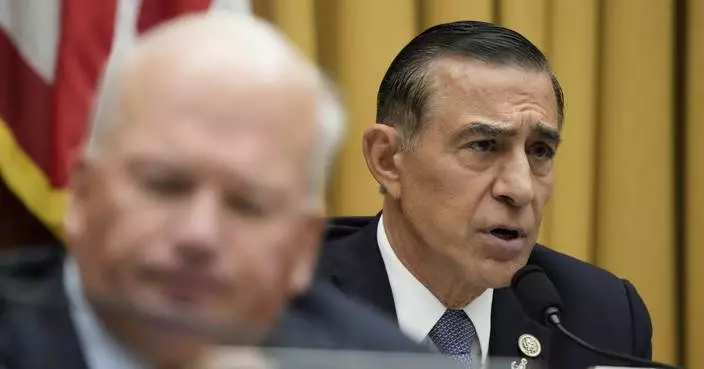
Redistricting forced a California GOP congressman to weigh a Texas move. He tells AP why he’s not

Closer or setting up Edwin Díaz? Williams ready for either role with Mets

Lamar Jackson finally faces Aaron Rodgers, assuming their shaky health allows it

Music, comedy and a whole lot of Trump. And then finally, an actual World Cup draw

FIFA gives Trump a peace prize in a departure from its traditional focus on sport

Harvard professor leaves US after arrest with pellet gun near synagogue, said he was hunting rats

Michael Jordan testifies in NASCAR antitrust trial, says he had no choice but to sue 'the entity'

Chiba is surprise leader after figure skating favorites falter at Grand Prix Final

Lille ends Marseille's six-week unbeaten run in Ligue 1






























